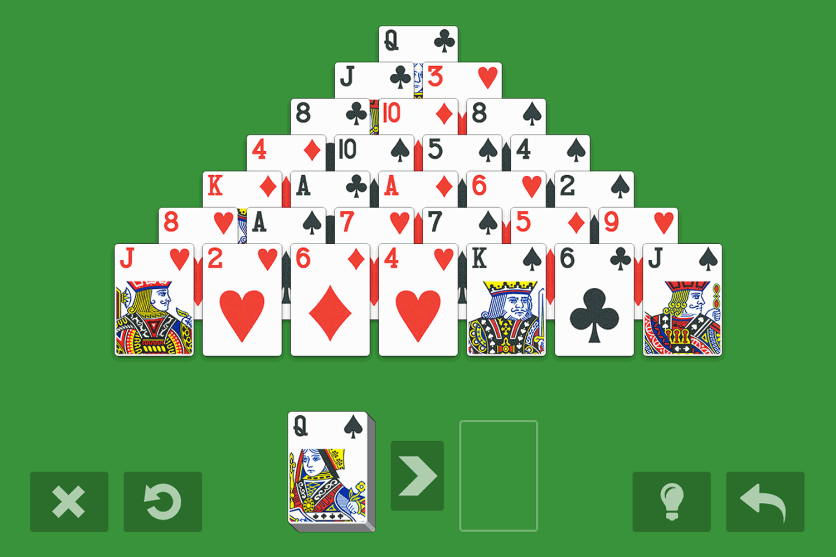
Pyramid Solitaire is a popular single-player card game with a history spanning many years. It is a variant of Klondike Solitaire in which a pyramid of cards must be removed by pairing them in specific combinations. In this article, we discuss the history of the game, from its origins as a physical card game to modern digital versions, and we delve into the rules of the game.
Origins of Pyramid Solitaire with Physical Cards
The origins of Pyramid Solitaire are somewhat unclear, but it is believed that the game emerged in the early 20th century. The game is thought to have originated in Europe, with some sources suggesting it was invented in France since French terms are used in the game, such as the word "tableau" meaning playing field. However, it is unclear how the game further developed and spread to other parts of the world. Fortunately, more is known about the computer version of the game.
History of Computer Versions of Pyramid Solitaire
Pyramid Solitaire has become even more popular in the digital age, thanks to the development of computer and mobile versions of the game. The first computer version of Pyramid Solitaire was created in the 1980s and quickly became popular among computer users. The game was included in the Windows operating system, starting with Windows 3.0, and has since been a staple of Windows computers.
The digital version of Pyramid Solitaire has made the game more accessible than it was with physical cards. Players can now enjoy the game on their desktop computers, laptops, smartphones, and tablets, and there are many online versions of the game available for free.
Rules of Pyramid Solitaire
The rules of Pyramid Solitaire are relatively simple. The game is played with a standard deck of 52 cards, and the cards are laid out in the shape of a pyramid, with one card at the top, two cards in the next row, three cards in the third row, and so on. There are a total of 7 rows. The remaining cards are placed below the pyramid in the stockpile.
The objective of the game is to remove all the cards in the pyramid by pairing them with other cards that together have a total value of 13. In the game, an Ace is worth 1 point, a Jack is worth 11 points, a Queen is worth 12 points, and a King is worth 13 points. For example, an Ace can be paired with a Queen (1 + 12 = 13), a Two can be paired with a Jack (2 + 11 = 13), and so on. The only card that does not need to be paired is the King since it is already worth 13 points. Additionally, you can only pair cards that are not covered by other cards in the pyramid.
Players can also draw cards from the stockpile, and any card that cannot be paired can be placed on a discard pile. The game is won when all the cards in the pyramid and stockpile are removed, and the game is lost when no more pairs can be made with the cards remaining in the pyramid and stockpile, the game is then locked and automatically ends.
Pyramid Solitaire is a classic patience game that has been enjoyed for many years. Whether played with physical cards or in a digital format, the game remains challenging and entertaining. With its simple rules and addictive gameplay, Pyramid Solitaire will continue to be a game enjoyed by players of all ages for many more years to come.
ⓒ 2025 TECHTIMES.com All rights reserved. Do not reproduce without permission.




